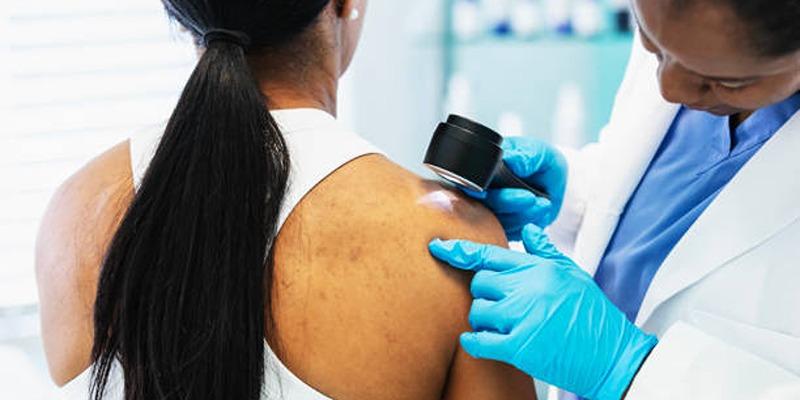Joint hypermobility is the property of the joints that allows a joint to move outside the regular movement, usually being as a result of genetic influences on connective tissues. Although some do not complain, others can have pain, instability and frequent injuries. Knowing about its causes, symptoms, and management is vital in the preservation of the joint comfort and augmenting the standard of life.
What Is Joint Hypermobility?

Joint hypermobility is as a result of a higher elasticity of connective tissue that stabilise joints such as ligaments, tendons, and the joint capsule. Such greater range gives the joints more exercise than usual, either at a certain joint, or in more than one and this is commonly referred to as generalized hypermobility.
However, there are those people who can have hypermobility with no negative side effects and this is commonly known as benign joint hypermobility. But in some, hypermobility may result in painful joints, re-injury and inability to perform daily activities. It is important to distinguish between harmless and hypermobility which can involve medical intervention.
Causes of Joint Hypermobility
Joint hypermobility has multifactorial causation, whereby genetic, structural and environmental causes usually interact.
Genetic Factors:
A great number of hypermobility cases are genetic. Increased elasticity in tissue can be enhanced by genetic differences in how collagen is built up or manufactured, which is a major protein of connective tissue. In particular, type I and type III collagen are important in maintaining stability of the joint and alterations in these levels may lead to joints moving out of a normal range. Some very useful clues are found in family history.
Connective Tissue Disorders:
There are inherited disorders closely related with excessive hypermobility. One such disease is Ehlers-Danlos Syndrome (EDS), which has hypermobilities in the joints coupled by delicate skin and other body complications. Contingent tissue disorders could consist of cardiovascular or skeletal issues in addition to hyper mobile joints.
Developmental Factors:
children and adolescents also have the ability to display increased joint flexibility because most connective tissues become flexible. In most instances, hypermobility reduces in later age due to maturation of ligaments and the internal joint capsule but there are cases where people can be hypermobile throughout their lives.
Factors related to activity:
Repeated movements and exercise may increase joint mobility. This can become quite common among athletes, dancers and gymnasts who become more flexible to the point of hypermobility. Although it is good to rely on for performance, excessive work on already elastic joints might lead to the chances of pain or injury.
Recognizing Symptoms of Joint Hypermobility
Joint hypermobility symptoms may be mild or severe based on the extent of tissue elasticity, and the presence of related problems. Key signs include:
Excessive Version of Range of Motion:
This is an extreme degree of range of motion attention Hypermobile joints are able to move well beyond acceptable limits without much restriction. This can frequently be seen in the fingers, wrists, elbow, knees or shoulder. People can also make some motions which are regarded as being abnormal in the general population; this may include acts like folding the thumb behind the wrist or bending the elbows at angles that are more than 180 degrees.
Discomforts in joints:
Most hyper mobile people feel some pain on the joints, especially following much activity, standing or repetitive movement. This can be a localized pain affecting one joint, or it can spread to a large number of joints, the knee, hips, and lower back being the most common.
Joint Instability and Injuries:
Hypermobile joints tend to develop dislocations, subluxations (partial dislocations) and sprains. Even a little kind of activity can cause instability and this can result in repetitive injuries unless managed properly.
Weakness and Fatigue in Muscles:
Muscles in areas around hypermobile joint become fatigued or weak as they attempt to counter the instability. This may increase the level of discomfort, as well as dysfunction, with time.
Related Symptoms:
A deceased living with generalized hypermobility also has a probability of tendonitis, lesions in the soft tissue or persistent musculoskeletal pain. Other syndromic systems may be affected by skin, heart, or other systems since these are possible chronic symptoms.
Diagnosing Joint Hypermobility
Correct diagnosis is the key to differentiate benign flexibility and clinically significant hypermobility. In a disciplined assessment interpolation typically involves:
Physical Assessment:
The Beighton Score or other methods are commonly used by clinicians to assess the mobility of the joints. This scoring system focuses on certain movements like finger extension, elbow hyperextension, knee hyperextension extension, flexion of the trunk. A greater score indicates the generalized hypermobility.
Medical and Family History:
It collects data regarding joint injuries, chronic pain, and family trends to decide which one is inherited and dependable as well as lifestyle-related.
Specialized Testing:
In cases of a suspicion of connective tissue disorders, a genetic testing or consultation with a rheumatologist or specialist, may be necessary. This particularly applies to early diagnosis of diseases that are seen to complicate their system, such as in the Ehlers-Danlos Syndrome, which may demand constant supervision and treatment.
Management and Treatment Strategies
Even though joint hypermobility does not have a unified treatment, medical, physical, and lifestyle approaches taken in unison will help to avoid complications and improve the quality of life.
Physical therapy:
Isolated movements that concentrate on muscle tone around hyper mobile joints enhance stability and lessen tensile force. Light exercises like swimming pool, Pilates or resistance training are encouraged to ensure mobility but without harming joints.
Pain Management:
OTC pain-killers might have short-term relief but the long-term management of the process includes activity regulation, strengthening activities, and postural adjustments to decrease the burden on joints.
Education and Self-Awareness:
It is essential to learn how to move properly, can go physically, learn when their joints stress. Conditions Strictly speaking, people with hypermobility are better suited to strategies with a focus on safe controlled movement.
Multidisciplinary Support:
In people who deal with hypermobility and have some connective tissue disorder, a group work approach that would incorporate medical specialists, physical therapists and occupational therapists is necessary to cover all aspects. This means that it works on predominantly joint health and beyond cognitive effect on any system.
Lifestyle Considerations for Joint Hypermobility

Adopting a proactive approach in daily life can help manage symptoms and maintain joint function:
- Consistent Low-Impact Exercise: Regular exercise strengthens muscles and improves coordination, providing natural support to hypermobile joints without causing excessive strain.
- Posture and Ergonomics: Proper alignment during sitting, standing, lifting, or repetitive tasks minimizes stress on vulnerable joints. Ergonomic tools and adjustments can prevent overextension and reduce fatigue.
- Weight Management: Maintaining a healthy weight decreases pressure on joints, particularly the knees, hips, and spine, reducing the risk of pain and injury.
- Monitoring and Journaling Symptoms: Keeping track of joint pain, injuries, and activity levels helps individuals and clinicians identify triggers and adjust management strategies accordingly.
Conclusion:
Flexibility is not all that constitutes joint hypermobility; it is a condition which needs to be known and managed. Knowing its causes, the broad range of its symptoms, and effective treatment strategies are important to contribute to the maintenance of joint health. With specific workouts, joint care, lifestyle changes, and expert advice, hypermobility individuals were able to stay stable, decrease their pain, and live an active and productive life.












